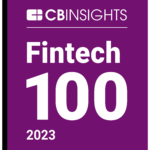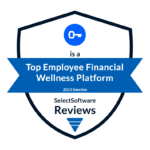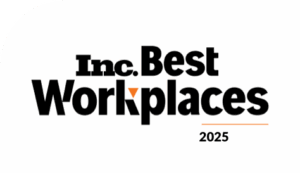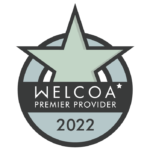Note: A version of this post originally published in BenefitsPro on January 19, 2023. It is reprinted with permission from BenefitsPro.
Key takeaways
- The Secure 2.0 retirement law introduces a new workplace emergency saving option to an already confusing landscape of approaches, from savings coaching to workplace savings accounts.
- Workplace savings programs need real solutions to succeed. This means offering a savings account, not just coaching — and embedding a savings program in holistic Financial Care that meets critical financial needs that accounts alone cannot fill.
- Applying savings account design best practices will help employers maximize support for employees, and program ROI.
- Brightside provides Financial Care with an integrated savings platform, and/or can embed an existing 401(k) and workplace emergency savings solution into our program to achieve more meaningful impact for employers and employees
The Secure 2.0 Act signed into law at the close of 2022 allows retirement plan sponsors to offer emergency savings accounts inside individual account retirement plans. For employers, this new type of account adds to an already confusing array of options to support employees with emergency savings.
Here’s an overview of how Secure 2.0 creates a new kind of workplace savings option, and tips to help employers choose the workplace savings approach that best meets employees’ needs.
The new workplace savings accounts under Secure 2.0
The new legislation allows individual account retirement plans to have an emergency savings account within the plan, effective after December 31, 2023. The main feature of these accounts are:
- Employers may automatically enroll employees into these accounts, up to 3% of pay.
- Contributions are capped so the account balance does not exceed the lesser of $2,500 or an amount set by the plan sponsor. After this, contributions may be automatically redirected to a Roth retirement account in the plan, if the employee has one.
- Employee contributions are made like Roth contributions, after tax.
- The money must be invested in an interest-bearing deposit account or an investment product designed to preserve principal.
- The savings contributions by the employee count for the purposes of any employer match in the plan, up to the same dollar amount as the account balance limit ($2,500 or less as set by the plan sponsor). These matching dollars must be directed to the retirement account within the plan, not the savings account.
- Only non-highly compensated employees are eligible.
- Employees are allowed to withdraw up to the full account balance at least once per calendar month. The first four withdrawals in the plan year must be free.
This new Secure 2.0 account type adds to the growing range of options available to employers looking to support emergency savings in the workplace. Approaches include:
- Standalone savings education or coaching
- Legacy retirement plan savings account add-ons
- Point solution savings accounts
- Savings accounts embedded in Financial Care
Employers can apply a number of lessons learned based on decades of trial and error across the financial health sector to maximize the impact of their programs.
Programs should include savings accounts integrated into holistic Financial Care
Financial health researchers, advocates, and policymakers have long recognized that emergency savings education alone is not enough. If programs do not make it easy to follow through on saving with an account that’s a breeze to use, employees won’t follow through on the guidance they receive. What’s more, the most financially stressed employees are the least likely to have an existing savings account or be well-served by retail savings providers. This is one of the reasons workplace savings programs tend to have single-digit engagement.
Similarly, financial health experts increasingly recognize that a program focused on savings as a standalone need doesn’t go far enough to meet employees’ financial needs.
Take 401(k)s: automatic enrollment has created impressive levels of participation, but plans have also experienced high levels of leakage, with employees withdrawing funds early. Employees who inquire about a 401(k) loan or a hardship withdrawal rarely get support beyond help completing their requested transaction, even when other better financial options are potentially available. Employers run the risk of recreating the exact same cycle with emergency savings accounts if they don’t offer holistic solutions for their employees.
What is holistic Financial Care?
Holistic Financial Care means employees are given support for any money issue, and a long-term partner to help them move up the continuum of financial health. If an employee is not saving, for example, the provider works with that client to resolve the underlying barriers, whether that’s a need to reduce spending on interest or bank fees, curb impulse spending, or help another adult in the household find work.
Over time, the provider helps the employee and their family progress by tackling issues such as debt and increasing income.
The deep relationship between a Financial Care provider and the employee creates ongoing opportunities for teachable moments to encourage savings. These moments are more effective than open enrollment alone, when the client may be facing higher healthcare and benefit costs and not be in the mindset to save.
For example, Brightside’s Financial Assistants leverage the moment when a client is facing an emergency to motivate clients to begin a savings habit that will help them avoid a similar crisis in the future—leading to about half of these employees starting to save actively.
8 design best practices employers should apply to savings features
Employers should apply these eight account design best practices to most effectively meet employees’ needs, whether using a holistic Financial Care program, or a dedicated solution for emergency savings.
1. Low- to zero-friction onboarding
To achieve mass participation, it is critical to make it as easy as possible for employees to start saving. Behavioral science researchers have pioneered a variety of nudges to help people adopt healthy behaviors that can be adapted to workplace savings.
The most well-known is automatic enrollment. Employers can also use techniques like embedding near-effortless savings enrollment choices into processes where employees are already making choices, such as new hire onboarding or annual open enrollment.
2. Payroll deduction for automatic saving
Behavioral finance research has shown that “set it and forget it” is the most effective way to maintain a savings plan. But automatic recurring ACH transfers from bank accounts to savings — popular among higher earners — are not suitable for employees who lack emergency savings. This is because automatic transfers can generate large overdraft fees, which can cost around $35 per transaction.
Some newer solutions have attempted to use technology or guarantees to avoid overdrafts, but the technology that supports this approach is still limited by legacy U.S. bank data and payments infrastructure. The Consumer Financial Protection Bureau has recently cracked down on this approach.
3. FDIC-insured deposits
For a financially stressed household, FDIC-insured deposits are the gold standard for trust. It’s easy to understand, and comes with a government guarantee that money will be there when needed. The comfort an FDIC-insured account can offer is particularly relevant now, as employees are barraged with worrying headlines about the crypto market crash and media speculation about the “next financial crisis.”
When faced with more exotic or unfamiliar investment options, employees may worry they’ll make a mistake and decide to opt out. If it takes more than a few seconds to explain the investment to the employee, it might not be the right option.
4. Appropriately conservative options
Financial experts recommend that emergency savings should be invested conservatively. Emergencies don’t give notice, so emergency savings solutions should prioritize security and liquidity over return. FDIC-insured deposits are the simplest way to help meet this need for employees. At a minimum, guardrails should be in place that prevent employees from putting their rainy day fund into risky, volatile assets. Look closely at what providers offer — some accounts are marketed as workplace emergency funds without these protections.
5. Quick, free access to money
For higher income employees, waiting a few days or even a week for access to funds can be a mild irritation; they typically have a cushion in spending accounts for everyday needs or other temporary sources of cash like credit cards or family.
For the most financially stressed employees, accessing funds quickly could mean the difference between being able to buy the gas to get to work that day, refill an important prescription, or keep the lights on.
It pays to look at the fine print.
- What will the typical wait times be for your employees on withdrawals?
- What kinds of fees might they be charged (e.g., to have a check mailed or to access funds more quickly)?
- Do they have to request funds by phone or only during specific times?
Secure 2.0 does not have stringent requirements on the timeliness or accessibility of employees’ funds.
6. A way to access money without using costly services like check-cashing
Nearly five percent of U.S. households don’t have a bank account. The number grows to 11% for African American households and 9% for Hispanic households. The strongest programs will give employees an option for a fee-free way to access money from their account. For example, a program could also provide unbanked employees with a debit card account that they can use to withdraw their savings and spend their funds.
7. No temptation to spend
The ideal savings program lets employees access their money quickly and uses “nudges” to discourage them from raiding savings for impulse spending. Some workplace savings programs offered by companies that make money from debit card interchange fees replicate the look and feel of checking accounts, and even give clients debit cards to use to spend emergency funds.
These programs can inadvertently send the signal that it’s okay to spend emergency savings when it’s not a true emergency.
8. Flexibility to save for personal needs
Employers should avoid low account maximums. A common rule of thumb is to have the equivalent of three to six month’s expenses saved for emergencies. Some employees will need to save more than that because they know they have near-term upcoming needs, like a medical leave or wedding.
Be aware that Secure 2.0 savings accounts will be capped at $2,500, so employers may consider pairing them with other savings options, or to select a more general purpose savings solution.
How Brightside can help
Brightside makes it simple for employers to not only help employees save, but also offer personalized support that gets to the full set of financial health needs. Our human Financial Assistants get to know your employees, uncovering and addressing their barriers to saving and tapping into their unique motivations. When emergencies do happen, they make sure employees are taking advantage of the full range of options available, not just savings balances.
Brightside’s FDIC-insured saving solution is designed in accordance with industry best practice. Employees can get started with minimal effort, save via recurring payroll deductions, and withdraw funds quickly at no cost. In addition, unbanked employees can access Brightside’s Spending Account, allowing them to make instant withdrawals from savings. Tailoring our features to the needs of financially stressed households is how we have achieved high savings participation rates, even among the most stressed employees.
Brightside also offers flexibility to deliver Financial Care for employers who already have standalone savings accounts in place. For example, employees can be prompted with an opportunity to connect with a Financial Assistant when they initiate a request to use their emergency funds, or tap into their 401(k).
To learn more about Brightside and/or schedule a demo, click here.
Written by Sophie Raseman, Head of Financial Solutions at Brightside





